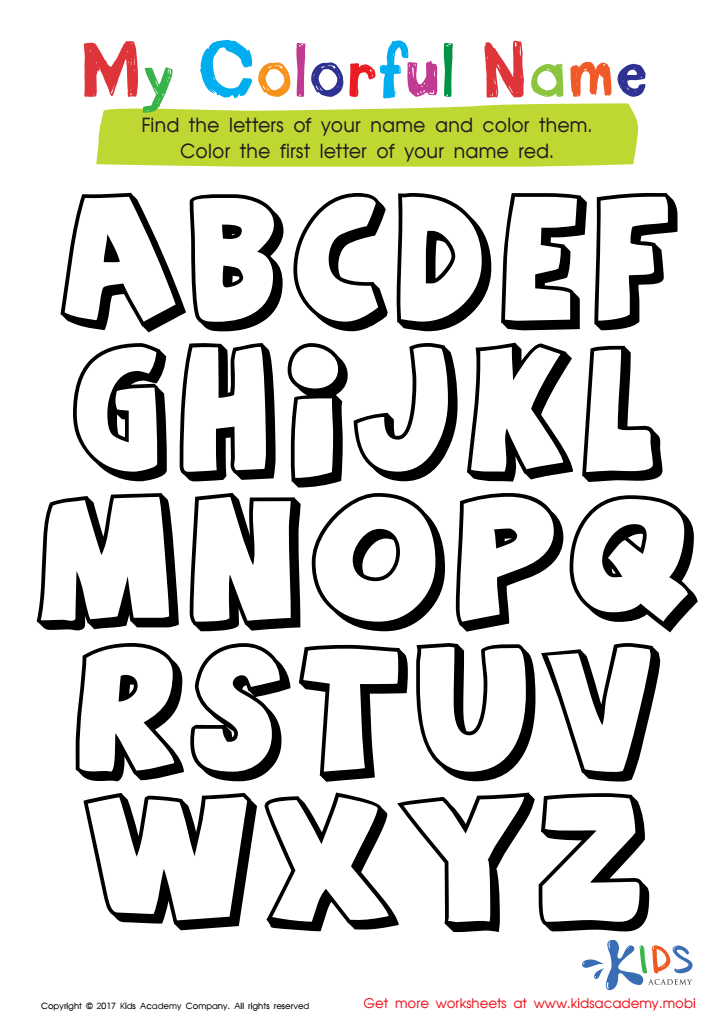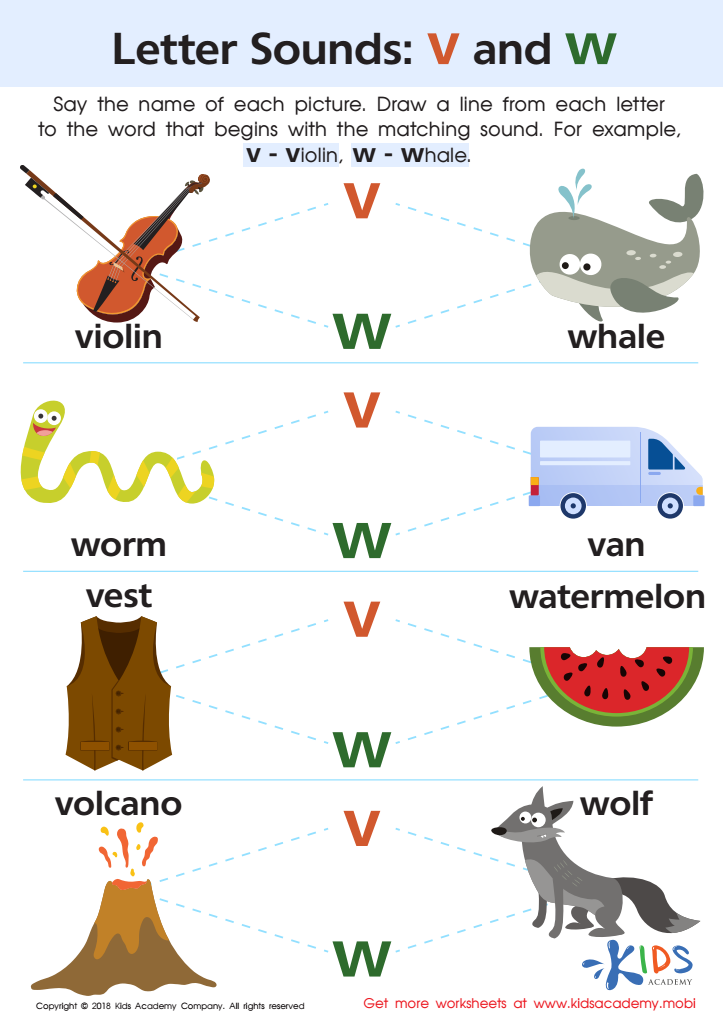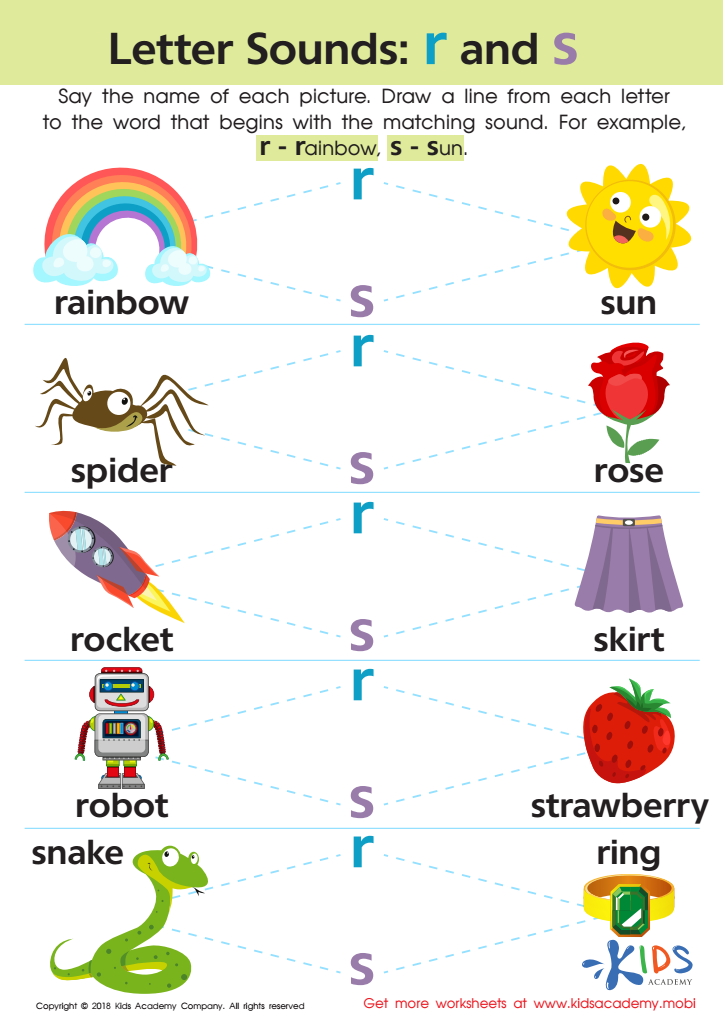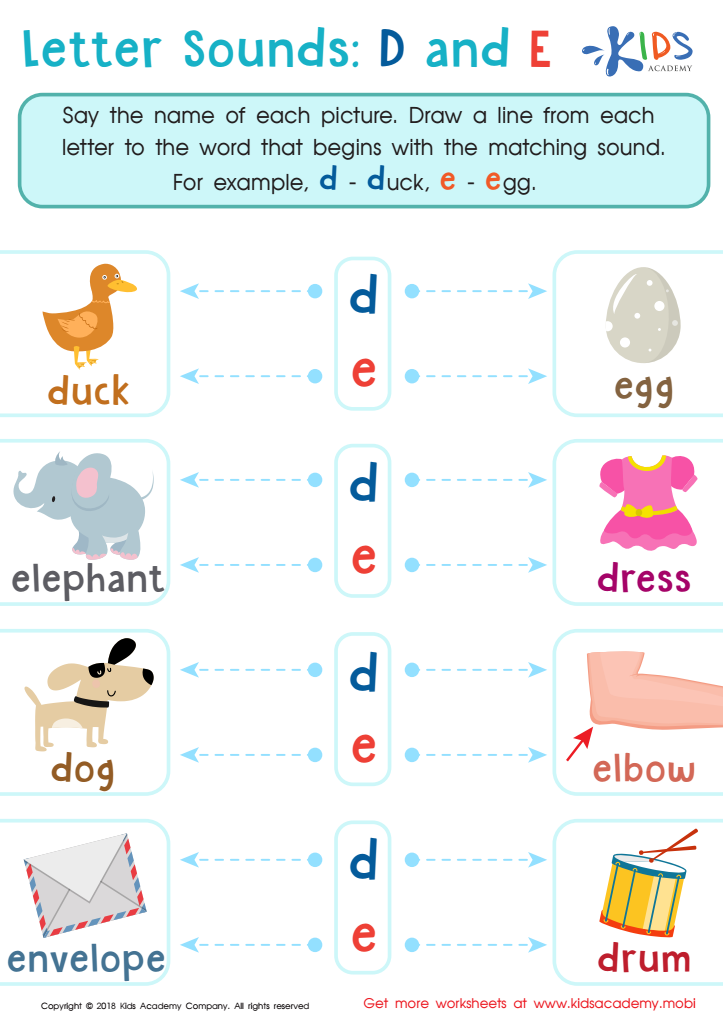Handwriting practice Phonics Worksheets for Ages 3-8
5 filtered results
-
From - To
Enhance your child's writing and phonics skills with our engaging handwriting practice Phonics Worksheets, designed specifically for ages 3-8. Each worksheet combines visual and auditory learning techniques to make mastering letters fun and effective. Through carefully curated activities, children improve their letter recognition, fine motor skills, and phonemic awareness. Our worksheets feature a variety of exercises, including tracing, writing, and sound identification, tailored to different learning levels. Perfect for preschoolers, kindergartners, and early elementary students, these printable resources provide a solid foundation for reading and writing success. Let learning become an enjoyable adventure with our expertly crafted worksheets.


Letter P Sound Worksheet


My Colorful Name Worksheet


Letter V and W Sounds Worksheet


Letter R and S Sounds Worksheet


Letter D and E Sounds Worksheet
Handwriting practice and phonics are foundational components of early childhood education that play a critical role in a child's academic and cognitive development. For ages 3-8, establishing strong handwriting skills aids in fine motor control, eye-hand coordination, and the ability to express thoughts clearly on paper. Consistent handwriting practice helps children develop the muscles needed for writing, which becomes essential as academic demands increase.
Phonics instruction, on the other hand, is essential for effective reading and spelling. Understanding the relationship between letters and sounds helps children decode new words, enhancing their reading fluency and comprehension. This integral skill also lays the groundwork for vocabulary expansion and better language usage.
When parents and teachers invest time in handwriting practice and phonics, they are setting children up for success by giving them the tools they need for effective communication and learning. These foundational skills encourage independent reading, boost self-esteem, and foster a lifelong love of learning. By making this a priority during the crucial early years, parents and teachers give children the advantage needed to thrive academically and beyond.
balancing importance of phonics and handwriting
phonological awareness

 Assign to My Students
Assign to My Students



















